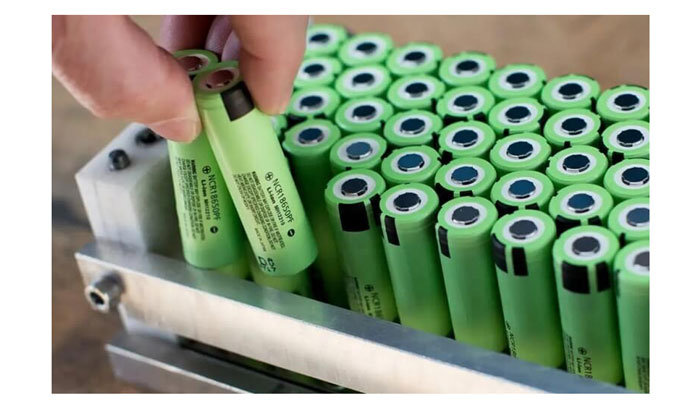Contents:
Storing lithium batteries properly is crucial to ensuring their longevity, performance, and safety. Improper storage can lead to issues such as reduced capacity, overheating, or even fire hazards. Below are the key considerations for storing lithium batteries effectively.

1. Temperature Control
Lithium batteries should be stored in a cool, dry place with a temperature range between 20°C and 25°C (68°F to 77°F). Extreme temperatures, both hot and cold, can cause the battery’s internal chemistry to degrade, leading to reduced capacity and shorter lifespan. Storing them in environments above 30°C (86°F) can accelerate this process, while temperatures below freezing can cause the electrolyte inside the battery to freeze, damaging it.
2. Avoid Full Charge or Discharge
Lithium batteries should not be stored fully charged or fully discharged. Ideally, the battery should be stored at around 40% to 60% charge. Storing at this state helps maintain the battery's health and prevents voltage imbalances or over-discharge, both of which can significantly reduce the battery’s life expectancy.
3. Humidity Control
Excessive humidity can cause corrosion of the battery's internal components and negatively affect its performance. It's essential to store lithium batteries in a dry environment, ideally with humidity levels under 65%. Avoid storing them in damp places like basements or in areas prone to condensation.
4. Use Original Packaging or Protective Cases
If possible, store lithium batteries in their original packaging. This will ensure they are kept safe from physical damage and accidental short circuits. If the original packaging is unavailable, place the battery in a protective case or use insulating materials (like plastic or rubber) to cover the battery’s terminals to prevent accidental contact with conductive materials.
5. Avoid Direct Contact with Metal Objects
Lithium batteries should not be stored near metal objects or conductive materials that can short-circuit the terminals. Always ensure that the terminals are not exposed and are protected from contact with any conductive surfaces.
6. Monitor for Swelling or Leaking
One of the most important aspects of storing lithium batteries is monitoring for any signs of swelling or leakage. If a battery begins to swell, it may indicate internal damage or a fault with the battery’s chemical structure, making it unsafe to continue using or storing. Leaking batteries can release harmful chemicals, which is a major safety concern. If you notice any of these signs, dispose of the battery properly and safely, according to local regulations for hazardous waste disposal.
.jpg)
7. Use Battery Management Systems (BMS)
If you’re storing multiple lithium batteries or large battery packs, using a Battery Management System (BMS) can help ensure each cell remains balanced and at an optimal charge level. BMS devices help monitor the battery’s charge, temperature, and overall health, reducing the risk of overcharging, over-discharging, and overheating. This is particularly important for large storage systems, such as those used in solar energy storage or electric vehicles.
8. Understand Battery Lifespan and Disposal
Every lithium battery has a limited lifespan, typically measured in charge cycles (the number of times a battery can be charged and discharged before its capacity starts to diminish). If you are storing old or unused batteries, be aware that their effectiveness may have already begun to degrade, even if they are stored properly. Eventually, the battery will need to be replaced. Proper disposal of lithium batteries is critical for safety and environmental concerns. Many regions have recycling programs specifically designed for lithium-ion batteries. Never dispose of them with regular waste, as they can be hazardous to the environment and potentially cause fires.
9. Storage During Transportation
When storing lithium batteries during transportation, particularly for international shipments, ensure that they are packaged according to the transportation regulations set forth by organizations like the International Air Transport Association (IATA) or the International Maritime Organization (IMO). These regulations specify guidelines on how batteries should be packed, marked, and handled to minimize risks during transit, especially concerning fire hazards or short circuits. Ensure batteries are placed in fire-resistant containers or enclosures during transport.
10. Proper Ventilation
Storing lithium batteries in an area with good ventilation is crucial to prevent any buildup of gas in the event of internal damage or leakage. A well-ventilated area allows gases, which could potentially be hazardous, to disperse safely. Ensure the storage area is free from obstructing items or other materials that could trap heat or gas around the batteries.
11. Label and Track Battery Storage
For businesses or individuals who have multiple lithium batteries or battery packs, it’s a good practice to label each battery with important details such as the date of purchase, model number, and storage condition. This makes it easier to track their age and monitor their condition over time. Keeping a log or inventory of the batteries in storage helps with efficient rotation and management, ensuring that older batteries are used first.
12. Avoid Storing in Highly Magnetic Fields
Lithium batteries should not be stored near strong magnetic fields. While they don’t pose an immediate risk, strong magnetic fields can interfere with the electronics inside the battery, potentially causing issues with the battery’s operation or management systems. It’s best to store lithium batteries in areas free of electromagnetic interference from equipment like large motors or high-voltage systems.
By adhering to these storage guidelines, you can maximize the lifespan, performance, and safety of your lithium batteries, whether for personal, business, or industrial use. Proper storage ensures that batteries are ready for use when needed and minimizes the risks associated with improper handling or degradation over time.
FAQs







.jpg)